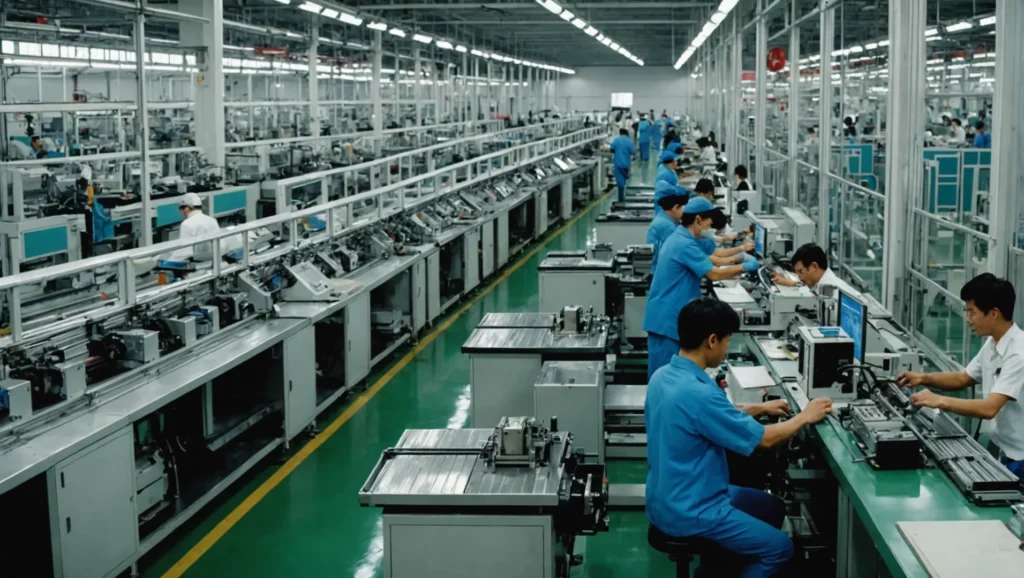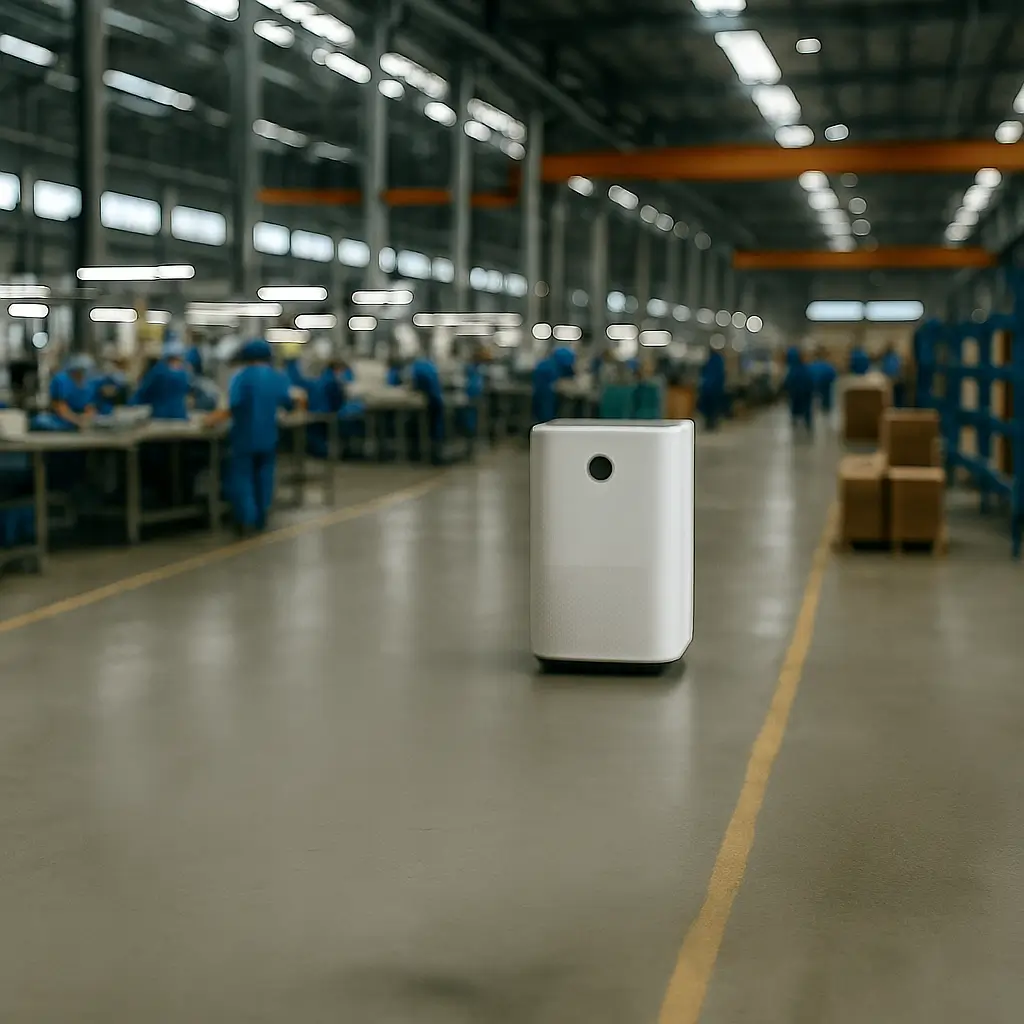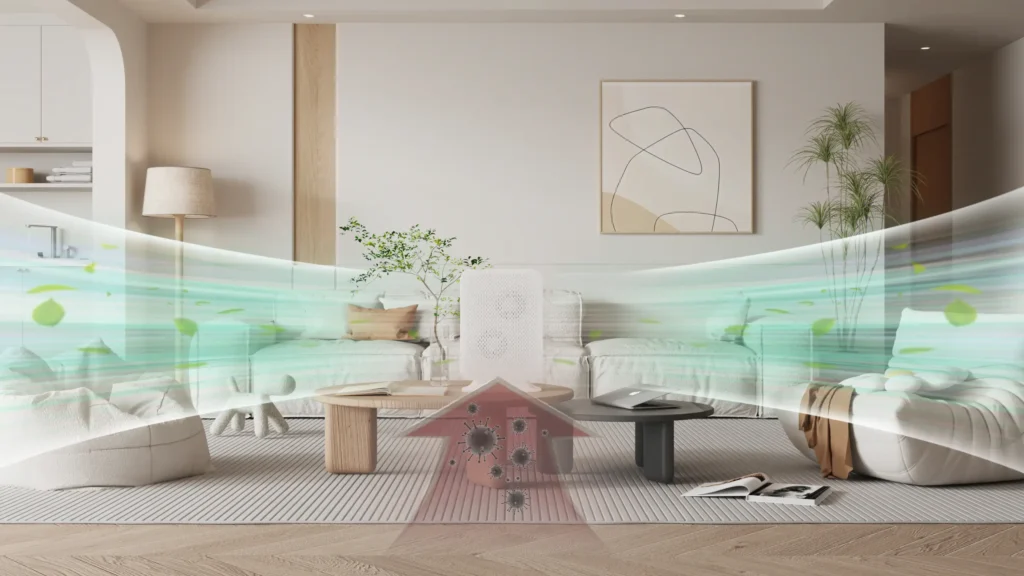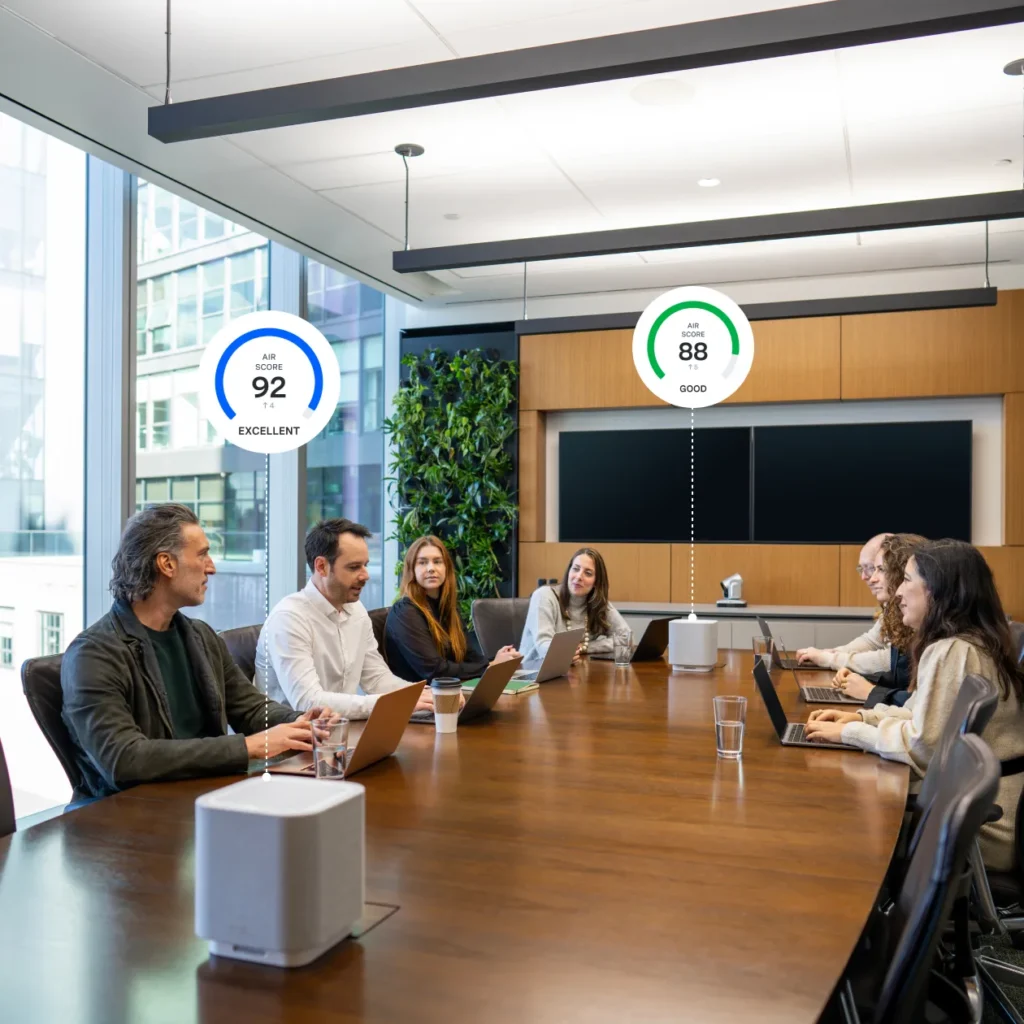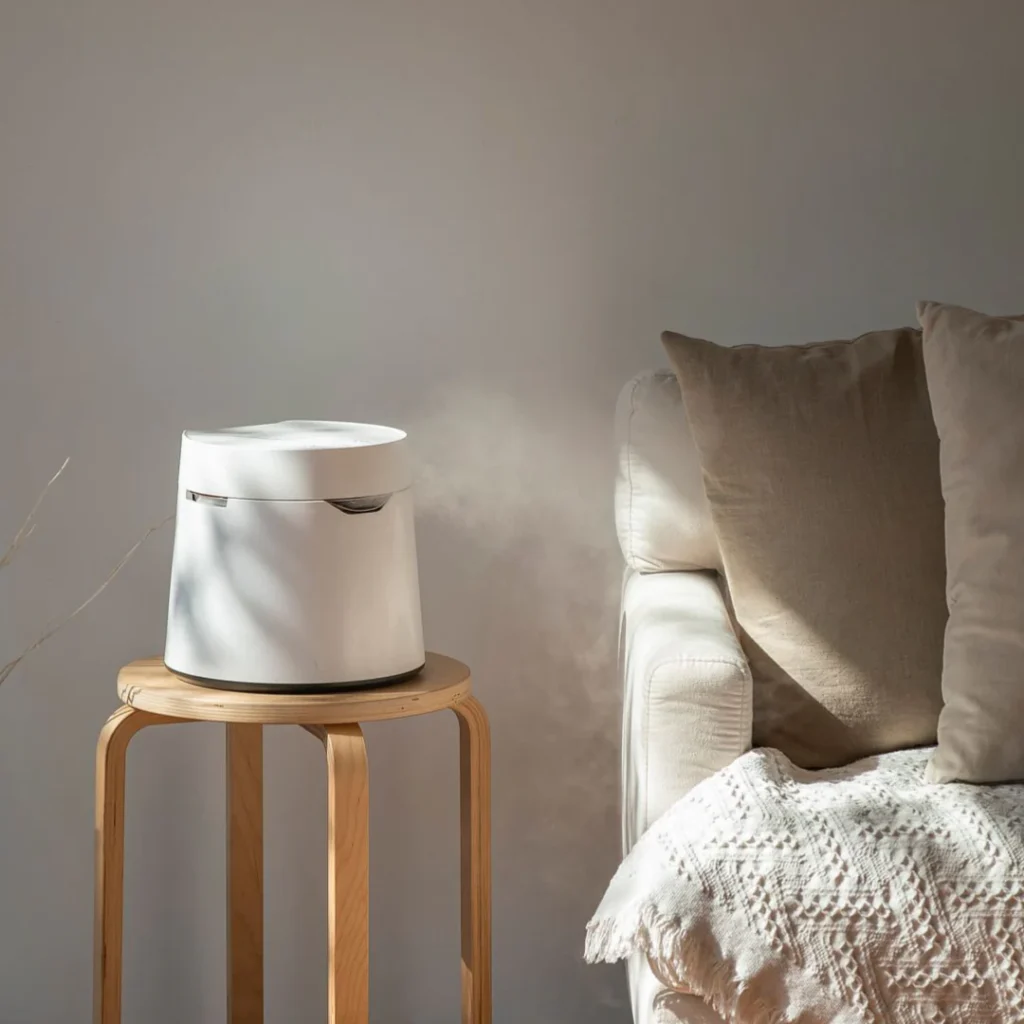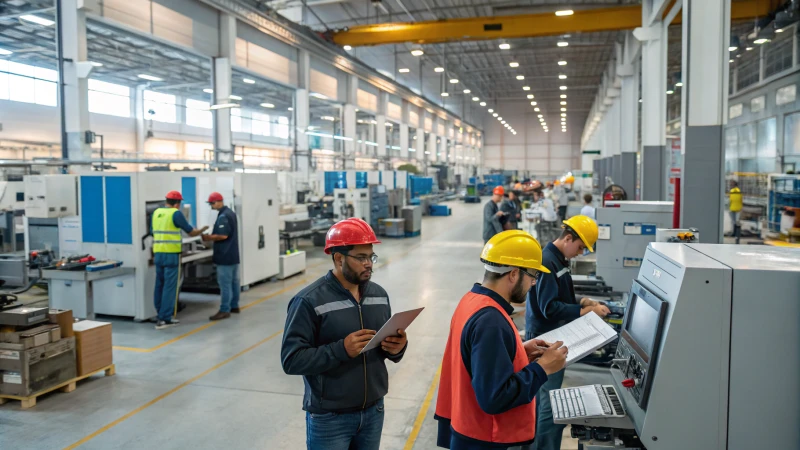공기청정기를 제조하려면 연구 개발(R&D)부터 품질 테스트, 대량 생산에 이르기까지 일련의 복잡한 단계가 필요합니다. 대기 오염과 실내 오염 물질이 전 세계적인 건강 문제가 되면서 효과적인 공기청정기에 대한 수요는 계속 증가하고 있습니다. 이 문서에서는 효율적인 프로세스, 필요한 기술 및 규정 준수에 중점을 둔 공기청정기 제조에 대한 종합적인 가이드를 제공합니다.
목차
- 소개
- 공기청정기란 무엇인가요?
- 공기청정기의 주요 구성 요소
- 공기청정기 제조 공정
- 공기청정기 효율에서 CFD와 고성능 팬의 역할
- 필터링의 핵심 기술 및 혁신
- 필터링 기술 비교
- 세부 품질 관리 조치
- 공기청정기 제조의 일반적인 과제
- 결론
소개
공기질이 건강 결과와 점점 더 밀접하게 연관되는 시대에 공기청정기는 알레르기 유발 물질, 곰팡이 포자, 휘발성 유기 화합물(VOC)과 같은 실내 오염 물질을 줄이는 데 중요한 역할을 합니다.1. 이 문서에서는 공기청정기 제조의 엔드투엔드 프로세스, 필수 구성 요소, 제품 품질 및 규정 준수에 대한 고려 사항을 살펴봅니다.
공기청정기란 무엇인가요?
공기청정기는 공기 중 오염 물질을 제거하여 실내 공기질을 개선하도록 설계된 장치입니다.2 가정, 사무실, 의료 시설에서 공기청정기를 사용할 수 있습니다. 공기청정기의 주요 목표는 호흡기 문제 및 기타 건강 문제를 일으킬 수 있는 오염 물질을 걸러내는 것입니다.3. 공기청정기는 HEPA 기반 필터부터 고급 이온화 및 UV-C 기반 장치에 이르기까지 다양한 유형이 있으며, 각기 다른 요구와 환경에 적합합니다.4.
공기청정기의 주요 구성 요소
공기청정기에는 다양한 구성품이 있으며, 각 구성품은 특정 용도로 사용됩니다.5. 주요 구성 요소는 다음과 같습니다:
- HEPA 필터: 알레르기 유발 물질, 꽃가루, 먼지 등 0.3마이크론 크기의 입자 99.97%를 걸러냅니다.6.
- 활성탄 필터: VOC, 담배 연기, 주방 냄새와 같은 가스 및 냄새를 흡수합니다.7.
- 팬 및 모터 어셈블리: 효과적인 정화를 위해 필수적인 필터를 통한 공기 흐름을 보장합니다. 고성능 팬은 공기청정기 제조의 핵심 과제인 공기 흐름과 소음 감소의 균형을 맞추는 데 필수적입니다.8.
- 제어판: 사용자가 속도, 타이머 및 모드 설정을 제어할 수 있습니다.
공기청정기 제조 공정
공기청정기 제조 공정은 시장 조사 및 설계, 부품 선택, 조립 및 테스트, 품질 관리의 네 가지 주요 단계로 나눌 수 있습니다.
1. 시장 조사 및 설계
시장 조사는 타겟 고객과 공기 정화 기술의 최신 트렌드를 이해하는 데 필수적입니다. 기업은 소비자 선호도와 경쟁사 제품을 평가하여 시장의 기대치를 충족하거나 초과하는 공기청정기를 설계합니다.9. 주요 중점 분야는 다음과 같습니다:
- 소비자 요구 사항: 소음 수준, 필터 수명, 크기 등 주요 관심사를 파악합니다.
- 경쟁사 분석: 시장 리더 연구 및 차별화를 위한 기능 분석10.
- 환경적 요인: 목표 시장의 일반적인 오염 물질 유형(예: 도시 지역의 꽃가루 또는 산업 환경의 VOC)과 같은 요소를 평가합니다.
디자인 목표: 혁신적인 소음 감소(예: 데시벨 캔슬레이션™) 및 공기 순환 기술을 통해 더 조용한 모델을 설계하여 일상 생활에 미치는 영향을 줄입니다.
2. 구성 요소 선택
디자인이 완성되면 다음으로 중요한 단계는 고품질 부품을 선택하는 것입니다. 공기청정기의 경우 필수 구성 요소에는 HEPA 필터, 활성탄 층, 팬 모터 및 케이스가 포함됩니다.11. 기업은 제품의 품질과 수명을 보장하기 위해 내구성과 효율성이 높은 부품을 우선적으로 고려해야 합니다.12.
| 구성 요소 | 설명 | 주요 기능 |
|---|---|---|
| HEPA 필터 | 공기 중 미세 입자 제거 | 입자 필터링 |
| 활성탄 | VOC 및 악취 흡수 | 가스 및 악취 필터링 |
| 고성능 팬 | 공기 흐름과 소음 균형 | 공기 흐름 및 소음 제어 |
| 제어판 | 속도 및 모드 조정 가능 | 사용자 인터페이스 및 제어 |
3. 조립 및 테스트
조립 과정에서 부품은 설계 사양에 따라 공기청정기의 케이스에 통합됩니다.13. 이 단계에서는 모든 구성품이 올바르게 작동하고 정수기가 안전 표준을 충족하는지 확인하기 위해 품질 관리가 가장 중요합니다.
- 소음 수준 테스트: 데시벨 캔슬레이션™ 기술을 활용하여 가정 및 사무실 환경에 적합한 조용한 작동을 보장하도록 소음 수준을 최적화했습니다.14.
- 공기 유량 테스트: 청정 공기 전달률(CADR)이 제품 사양을 충족하는지 확인하기 위해 테스트를 수행하여 팬 속도와 여과 사이의 효과적인 균형을 보장합니다.15.
HEPA 필터가 장착된 공기청정기는 실내 공기질을 크게 개선합니다.True
HEPA 필터는 99.97%의 입자를 포집하여 공기 청정기는 오염 제어에 매우 효과적입니다.
4. 품질 관리 및 인증
품질 관리에는 각 장치가 업계 표준을 충족하는지 확인하기 위한 일련의 엄격한 테스트가 포함됩니다. 공기청정기는 안전성과 효능을 보장하기 위해 CE, AHAM 및 HEPA 표준과 같은 인증을 받아야 합니다. CADR이 높을수록 공기를 효과적으로 정화할 수 있는 공기청정기의 능력을 의미하므로 CADR이 각 제품 유형별 목표 범위 내에 있는지 확인하는 것이 중요합니다.16.
모든 HEPA 필터는 냄새와 VOC를 효과적으로 제거합니다.False
HEPA 필터는 가스가 아닌 입자를 포착하며 활성탄 필터만 VOC를 흡수합니다.
공기청정기 효율에서 CFD와 고성능 팬의 역할
고성능 저소음 팬은 소음을 최소화하면서 필터를 통과하는 최적의 공기 흐름을 유지하기 위해 공기청정기 제조에 있어 매우 중요합니다.17. 전산 유체 역학(CFD)은 제조업체가 공기 흐름을 시뮬레이션하고 팬 및 덕트 설계를 최적화하는 데 도움이 되므로 효율적인 공기청정기를 설계하는 데 중요한 역할을 합니다.
- 팬 전력과 소음 균형 맞추기: 팬 속도는 소음 수준에 영향을 미치므로 제조업체는 소음 증가 없이 공기 흐름을 극대화하는 구성을 테스트하기 위해 CFD를 사용합니다.18.
- 공기 흐름 및 필터 저항: 공기청정기의 효과는 필터 저항과 팬 용량 간의 균형에 따라 크게 달라집니다. 최적화된 공기 흐름 설계와 함께 밀도가 낮은 필터를 사용하면 소음을 최소화하면서 높은 CADR을 달성할 수 있습니다.19.
- CADR(청정 공기 전달률): 분당 입방 피트(CFM) 단위로 측정되는 CADR은 공기 청정기의 효과를 판단하는 핵심 지표입니다.20. 낮은 노이즈 출력과 결합된 높은 CADR은 고품질 제조 및 설계의 지표입니다.
공기청정기의 CADR에 대해 자세히 알아보려면 다음을 읽어보세요. 깨끗한 공기 전달률에 대한 EPA 가이드.
필터링의 핵심 기술 및 혁신
고급 여과 기술은 계속해서 발전하여 공기청정기의 효율을 향상시키고 있습니다. 이 섹션에서는 최근의 혁신 기술을 살펴봅니다:
- 정전기 강수량: 이 기술은 입자를 충전하여 집진판에 부착되도록 합니다.21. 잦은 교체 없이 장기간 필터링이 가능합니다.
- 이온화: 입자 감소에 효과적이지만 낮은 수준의 오존을 생성할 수 있습니다. 일반적으로 환기가 잘 되는 산업 환경에 가장 적합합니다.22.
- UV-C 기술: 박테리아와 바이러스의 DNA를 분해하여 박테리아와 바이러스를 파괴합니다. 병원에서 효과적이지만 성능 향상을 위해 HEPA와 함께 사용하는 경우가 많습니다.23.
- 소수성 및 친수성 필터: 주방 및 제조 현장과 같은 특정 환경을 위한 공기 청정기에서 오일 및 수성 오염 물질을 포집하여 수명을 연장하고 보호 기능을 강화하는 데 사용됩니다.24.
각 기술에 대한 자세한 인사이트는 다음을 참조하세요. 공기 청정기 기술 설명.
필터링 기술 비교
아래는 공기청정기의 다양한 여과 기술을 구분하는 데 도움이 되는 비교표입니다.
| 필터링 기술 | 효과 | 부산물 | 모범 사례 |
|---|---|---|---|
| HEPA 필터 | 높음 | 없음 | 알레르겐, 먼지 |
| 활성탄 | 보통 | 없음 | 냄새, VOC |
| UV-C 빛 | 변수 | 없음 | 병원균 제어 |
| 이온화 | 보통 | 잠재적 오존 | 먼지, 꽃가루 감소 |
| 정전기 | 보통 | 없음 | 산업용 애플리케이션 |
세부 품질 관리 조치
공기청정기의 품질을 보장하기 위해서는 다양한 품질 관리(QC) 조치가 필요합니다:
- 필터 무결성 테스트: 필터가 정격 여과 성능을 충족하거나 초과하는지 확인하며, 이는 HEPA 및 탄소 기반 시스템에 매우 중요합니다.25.
- 소음 테스트: 최적의 편안함을 위해 데시벨 수준을 정확하게 측정하고 조정하기 위해 무반향 챔버에서 수행됩니다.26.
- 공기질 센서 보정: 센서가 공기질 변화를 정확하게 감지하고 보고하도록 보장합니다. PM2.5, CO2 및 VOC 센서의 보정은 필수입니다.27.
- 누출 테스트: 필터링되지 않은 공기가 여과 시스템을 우회하여 전체 성능을 저하시키는 일이 없도록 케이스의 무결성을 확인합니다.28.
- 내구성 테스트: 다양한 환경 조건을 시뮬레이션하기 위한 극한의 온도, 진동 및 스트레스 테스트 포함29.
공기청정기 제조의 일반적인 과제
공기청정기를 제조하는 데는 신중한 계획과 혁신이 필요한 고유한 과제가 있습니다:
- 소음 제어: 소음은 공기청정기 설계의 주요 관심사입니다. 제조업체는 데시벨 캔슬레이션™과 같은 기술을 활용하여 공기 흐름에 영향을 주지 않으면서 작동 소음을 줄일 수 있습니다.30.
- 필터 저항과 팬 전력의 균형 맞추기: 효과적인 공기청정기는 팬 강도와 필터 저항의 균형을 맞춰 CADR과 소음 수준을 모두 최적화합니다.31.
- 에너지 소비량: 과도한 전력 사용 없이 높은 공기 순환을 보장하는 것이 핵심 과제입니다. DC 모터를 활용하면 성능을 유지하면서 에너지 사용을 줄일 수 있습니다.32.
- 규정 준수: 공기청정기가 합법적으로 유통되려면 AHAM 및 CE 인증과 같은 현지 및 국제 표준을 충족해야 합니다. 규정을 준수하려면 VOC, 입자 여과 및 에너지 소비에 대한 테스트가 필수적입니다.33.
결론
공기청정기를 제조하려면 첨단 여과 기술, 엄격한 품질 관리, 소비자 니즈에 대한 깊은 이해가 필요합니다. 깨끗한 실내 공기에 대한 수요가 계속 증가함에 따라 소음 감소, 여과 효율, 사용자 친화적인 디자인의 혁신이 제조업체의 최우선 과제로 남아 있습니다.


